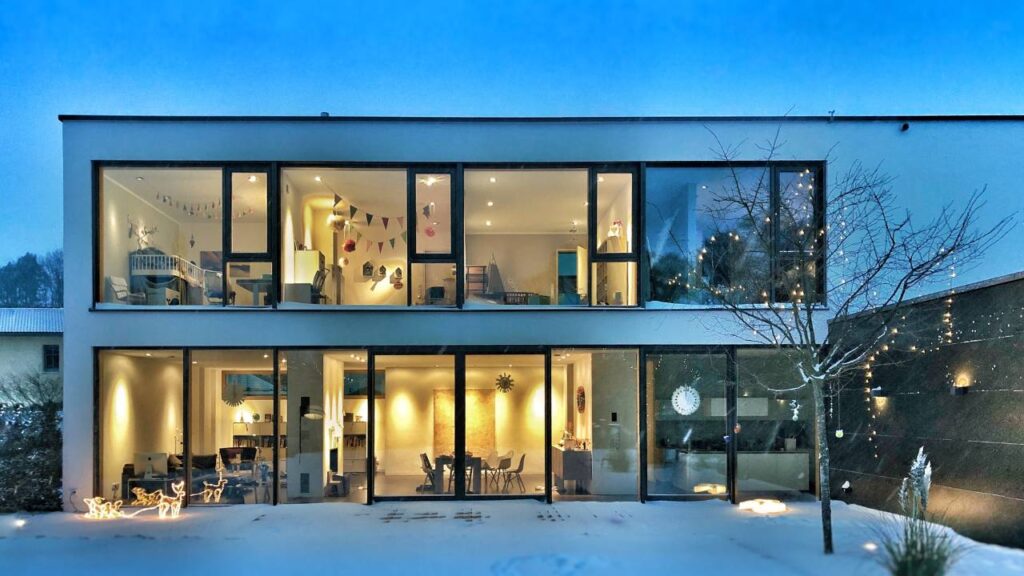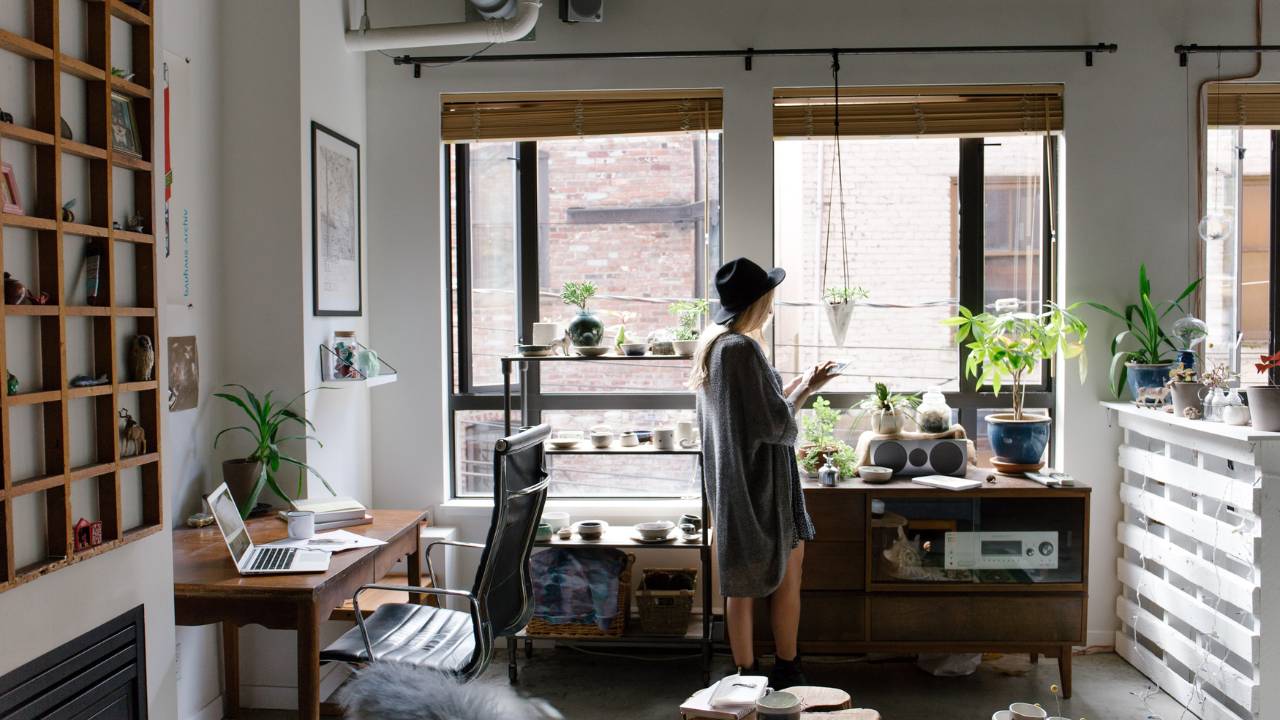A home, often described as one’s safe haven, is where the heart finds solace, the mind peace, and the body relaxation. As time has meandered through ages, what we’ve known to be our ‘home’ has remarkably transformed. From humble abodes carved out in nature to towering skyscrapers equipped with the latest technologies, the concept of a home has been a testament to our evolutionary journey.
But what hasn’t changed is our innate desire for comfort. In this era, where our world is characterised by rapid advancements and innovations, how have we redefined comfort within the four walls of our abode? Let’s delve deeper into the layers of contemporary homes and unravel the various facets that contribute to our modern comforts.
The Evolution of Home Comfort

Historically, homes served as fundamental shelters, providing protection against the harshness of nature and the external world. From caves and huts to wooden and brick houses, the primal focus was on safety and basic shelter. As societies flourished and economies grew, so did our aspirations for the homes we built. These were no longer mere structures of refuge; they became profound expressions of cultural values, personal aspirations, and aesthetic preferences.
Renaissance period homes flaunted grandeur and opulence, indicative of the socio-political status of their inhabitants. As the industrial revolution dawned, homes began reflecting a balance between functionality and design, integrating innovations of the age. Come the 20th century, with urbanisation at its peak, the compact city homes became the norm, maximising your living space while optimising space and not compromising on comfort.
The late 20th and 21st centuries brought a technological revolution, reshaping our lives in unimaginable ways. Home comfort during these times evolved to incorporate state-of-the-art technologies and amenities. Underfloor heating systems, advanced HVAC systems, and smart home devices, to name a few, marked a transformative era in home living. Now, comfort was no longer restricted to spacious rooms or plush furniture; it transcended to the realm of ambient temperature, mood lighting, and even voice-controlled gadgets.
Moreover, the definition of comfort began to vary for different individuals. For some, it was the luxury of a home theatre system, while for others, it was the serenity of a reading nook by the window. The modern age has given homeowners the flexibility and means to customise their comfort, making homes truly personal and reflective of individual needs and desires.
This dynamic journey from basic shelters to tech-integrated personal spaces reveals the essence of human nature – our unwavering quest for better, more comfortable living. As we continue to forge ahead, the evolution of home comfort promises even more exciting and revolutionary milestones.
Hidden Enhancements for Ultimate Comfort
While aesthetics and visible features often take centre stage when we talk about modern homes, it’s the unseen, behind-the-scenes elements that truly elevate our living experience. These hidden enhancements, although not prominently showcased, play a pivotal role in ensuring our homes are the epitome of comfort, safety, and efficiency.
Let’s take insulation as a prime example. Often tucked away within walls, ceilings, and floors, the significance of top-notch insulation installed by professional insulation companies such as Usher Insulation cannot be understated. Insulation acts as a barrier, preventing the excessive transfer of heat. In colder months, it ensures the warmth generated by heating systems is retained within the home, creating a snug and cosy environment. Conversely, during sweltering summer days, it helps keep the scorching heat at bay, ensuring interiors remain cool and pleasant. Moreover, the right insulation can be a sound investment, leading to reduced energy consumption and consequent cost savings on utility bills.
Beyond temperature regulation, insulation plays another silent yet crucial role in noise reduction. Living in bustling urban environments or noisy neighbourhoods can be a challenge, with external sounds often causing disruptions. High-quality insulation materials can dampen these external noises, creating an oasis of calm and tranquillity within the confines of one’s home. This acoustic comfort is particularly cherished in today’s fast-paced world, offering residents a respite from the constant cacophony of urban life.
But the realm of hidden enhancements extends beyond insulation. Consider the foundational elements like the quality of bricks, cement, and the structural design. These are rarely seen once the house is complete but form the bedrock upon which the entire structure rests. Superior quality materials and innovative construction techniques ensure the home stands strong against natural calamities like earthquakes, storms, and floods. They provide longevity to the structure, ensuring generations can reside with the assurance of safety.
Then there are advanced plumbing systems and concealed wiring. Modern homes are equipped with plumbing that ensures optimal water pressure in all outlets, be it showers or taps, enhancing the everyday experience of residents. The hidden pipelines are also designed to reduce the chances of leaks, preventing potential damage. Similarly, concealed electrical wiring not only adds to the aesthetics by ensuring no unsightly wires dangle from walls but also promotes safety by reducing risks of electrical hazards.
In the realm of technology, we see the integration of systems like hidden sensors and smart home modules. These devices, often inconspicuous, can detect changes in the environment, from potential security breaches to fluctuations in indoor air quality. They can be programmed to alert homeowners or even take automatic corrective actions, like adjusting the thermostat or activating security alarms.
The Importance of Energy Efficiency

Energy efficiency has become more than just a buzzword; it’s a global imperative that permeates many aspects of our lives, especially when it comes to the spaces we call home. As we face the challenges of climate change and dwindling natural resources, the emphasis on energy efficiency gains paramount importance, shaping the way we design, construct, and live within our homes.
Understanding energy efficiency begins by recognising its multifaceted benefits. At the forefront is the undeniable environmental advantage. Traditional methods of energy production often rely on finite resources, such as coal, oil, and gas. These fossil fuels, when burnt for energy, release copious amounts of carbon dioxide and other greenhouse gases into the atmosphere, accelerating global warming and leading to detrimental climatic changes. By making our homes energy-efficient, we can significantly reduce our reliance on these resources, thereby decreasing our carbon footprint. Essentially, every kilowatt-hour of energy saved in an efficient home translates to less carbon dioxide released into the environment.
But the environment isn’t the sole beneficiary of this efficiency. Homeowners stand to gain significantly too. Financially, energy-efficient homes can lead to substantial savings. Think about the draughty old homes where heaters run endlessly during winters, or those with inadequate insulation that require air conditioners to work overtime during summers. The costs of such inefficiencies mount over time. Conversely, an energy-efficient home, with features like double-glazed windows, efficient insulation, and energy-saving appliances, can help homeowners save a considerable sum on their utility bills each year.
Furthermore, the realm of energy efficiency is also intertwined with comfort. A well-insulated home, for instance, not only ensures that less energy is consumed but also guarantees consistent indoor temperatures. Gone are the days of cold drafts and sweltering rooms. Instead, homeowners can enjoy a steady, comfortable temperature year-round, irrespective of the whims of external weather.
A crucial dimension often overlooked is the broader economic perspective. As demand for energy-efficient solutions grows, so does the market for green products and services. This spurs innovation and creates jobs, leading to a robust economy centred around sustainable practices. Moreover, nations can reduce their dependence on imported fuels, fostering energy independence and greater economic stability.
Lastly, embracing energy efficiency in homes sets a precedent, influencing wider societal norms. When communities witness the tangible benefits of energy-efficient living, be it the cost savings, enhanced comfort, or the environmental advantages, it creates a ripple effect. Neighbours, friends, and entire communities can be inspired to adopt similar measures, amplifying the positive impact manifold.
Harnessing Nature’s Resources
The human journey is a testament to our enduring relationship with nature. From ancient civilisations that worshipped the sun and revered the rivers to modern societies seeking solace in green spaces amidst urban jungles, nature has always played a pivotal role in our existence. It’s no surprise, then, that even in the contemporary context of homebuilding and design, nature remains at the core. Harnessing nature’s resources not only aligns with our sustainable aspirations but also has profound effects on enhancing the quality of our lives.
Solar energy is a stellar example of our endeavours to tap into nature’s abundant offerings. The sun, a colossal ball of energy, showers the Earth with more power in an hour than the entire world uses in a year. By using solar panels, homeowners have the opportunity to capture a fraction of this energy, converting it into electricity for daily use. Not only does this drastically reduce dependence on non-renewable energy sources, but it also translates to significant financial savings in the long run. The upfront cost of installing solar panels is often outweighed by the long-term benefits of virtually free electricity. Moreover, many regions now offer incentives, tax credits, and grants to homeowners who opt for solar energy, making it an even more attractive proposition.
Natural lighting is another way homeowners are drawing from nature to enhance comfort. Expansive windows, skylights, and strategically designed open spaces serve multiple purposes. They bathe interiors in a warm, natural glow, reducing the need for artificial lighting and thereby conserving electricity. Beyond the tangible benefits, natural light plays a significant role in enhancing our mental well-being. Exposure to sunlight increases the brain’s release of serotonin, a hormone associated with boosting mood and helping a person feel calm and focused. Consequently, homes illuminated by natural light often harbour happier, more productive inhabitants.
But nature’s bounties aren’t limited to just sunlight. Rainwater harvesting is an age-old practice being revived in modern homes, allowing homeowners to collect and store rainwater for various purposes. Whether used for watering gardens, flushing toilets, or, after purification, as drinking water, this practice significantly reduces the demand on local water supplies. Given the increasing water scarcity in many regions, rainwater harvesting is not just an eco-friendly choice but also a practical one.
Another fascinating trend is the integration of indoor plants and vertical gardens in home design. Beyond their aesthetic appeal, plants play a crucial role in improving indoor air quality. They absorb pollutants like formaldehyde and benzene while releasing oxygen, purifying the air we breathe. This has significant health benefits, especially in urban areas where pollution levels are often high.
Additionally, homeowners are increasingly considering the natural airflow and ventilation of their homes to reduce dependence on artificial cooling or heating systems. By understanding the local climate and the path of prevailing winds, homes can be designed to harness the cooling breezes of summer or block the chilly winds of winter.
Future Trends and Predictions

As we stand on the precipice of an era marked by rapid technological advancements and a heightened awareness of environmental responsibility, it’s fascinating to project the trajectory of the future of sustainable home living and comforts in the coming years. The homes of the future will likely be a harmonious blend of innovative design, advanced technology, and sustainable practices, embodying the aspirations and necessities of modern living.
Starting with the realm of sustainability, it’s expected that the eco-friendly trend will not just be an option but a standard in home construction and design. The increasing consciousness about climate change and the depleting natural resources is pushing designers, architects, and homeowners to adopt sustainable solutions. We might see a rise in homes constructed from recycled or upcycled materials, reducing the carbon footprint right from the building phase. Additionally, with increasing water scarcity in various parts of the world, water conservation systems, like greywater recycling and advanced rainwater harvesting, could become integral components of modern homes.
Technology, as it seeps further into our daily lives, will indubitably play a pivotal role in shaping the homes of the future. The concept of ‘smart homes’ is already gaining traction, but the next few years will likely witness an exponential rise in its adoption. Homes will not just be interconnected but will be intelligent, capable of learning residents’ habits and preferences. Imagine a house that adjusts lighting based on the time of day, or a refrigerator that notifies you when you’re running low on essentials. Artificial Intelligence (AI) will be at the forefront of these developments, ensuring homes are not just shelters but responsive environments adapting to the inhabitants’ needs.
Moreover, with the increasing urbanisation and the consequent space crunch in cities, efficient space utilisation will gain paramount importance. Multi-functional furniture and flexible living spaces might become the norm. Rooms designed to transform, walls that can be repositioned, and furniture that can adapt to various functions will allow residents to make the most of limited spaces. This trend will be driven by both necessity and a shifting cultural mindset that values experiences over possessions, leading to minimalistic yet highly functional home designs.
In terms of health and well-being, the homes of the future will likely incorporate features that promote holistic wellness. With growing awareness about the importance of mental health and well-being, homes might be designed to include spaces dedicated to meditation, relaxation, and hobbies. Moreover, as the boundaries between work and home continue to blur, especially in the aftermath of global events like the COVID-19 pandemic, homes will be equipped with dedicated and ergonomic workspaces to ensure productivity without compromising comfort.
Lastly, community living and collaborative spaces might see a resurgence. The age of individualistic living might give way to integrated communities where shared amenities, gardens, and communal spaces foster a sense of belonging and collective well-being. These spaces will be designed keeping in mind the diverse needs of residents, promoting interaction and collaboration.
Conclusion
The journey of home comforts, as we’ve traversed through its various facets, is nothing short of remarkable. From the historical nuances of how homes were perceived to the cutting-edge technological and sustainable developments of the present day, this journey reflects our ever-evolving relationship with the spaces we inhabit. It’s a testament to human innovation, adaptability, and the undying quest for betterment.
What’s striking, however, is that the essence of ‘home’ remains constant amidst this whirlwind of change. Despite the advancements and transformations, a home still embodies safety, warmth, and a sense of belonging. As we’ve delved into the hidden enhancements, harnessed nature’s bounties, and looked forward to future trends, it’s clear that all these innovations and shifts converge towards a singular goal: enhancing the comfort, well-being, and happiness of those who dwell within.
